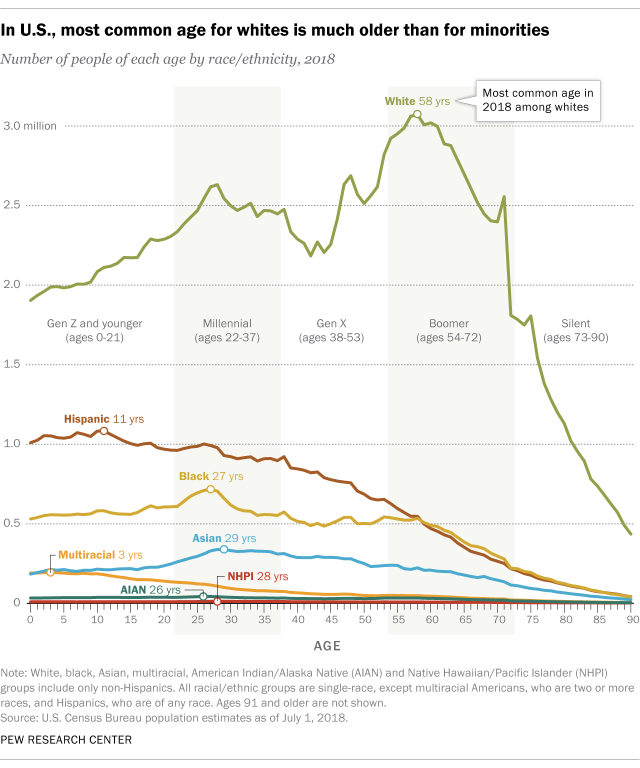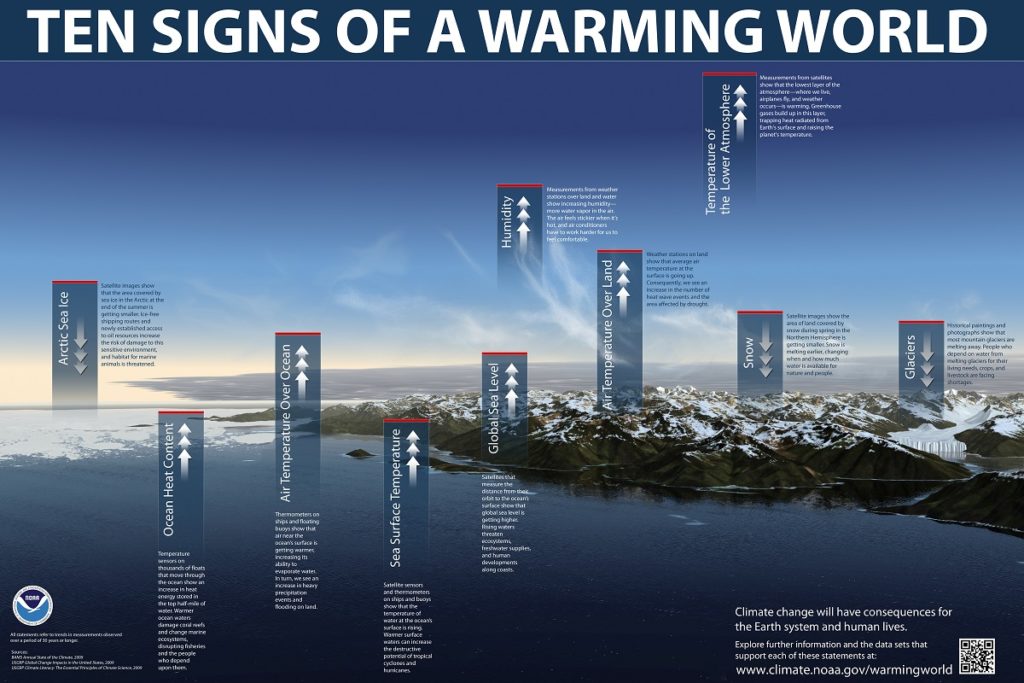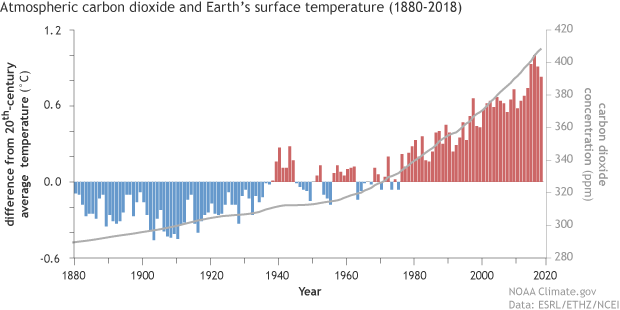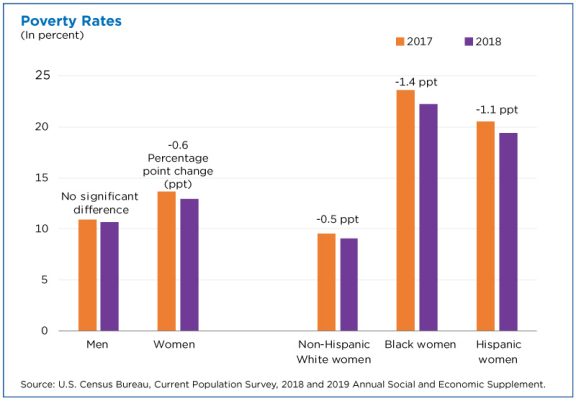 The Pew article, The most common age among whites in U.S. is 58, more than double that of racial and ethnic minorities by katherine Schaeffer (7/30/19) provides this graph of the distribution of age by race.
The Pew article, The most common age among whites in U.S. is 58, more than double that of racial and ethnic minorities by katherine Schaeffer (7/30/19) provides this graph of the distribution of age by race.
Whites had a median age of 44, meaning that if you lined up all whites in the U.S. from youngest to oldest, the person in the middle would be 44 years old. This compares with a median age of just 31 for minorities and 38 for the U.S. population overall.
U.S. Hispanics were also a notably youthful group, with a median age of 30. As a separate Pew Research Center report noted, Latinos have long been one of the nation’s youngest racial or ethnic groups, dating back to at least 1980.
The demographic differences leads to questions about studies that compare variables by race. If they don’t adjust for these differences they may be inaccurate. In general, a random sample of people will end up with an older cohort for whites and some variables are correlated with age.








